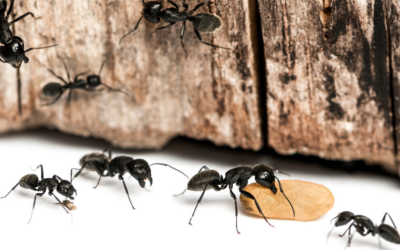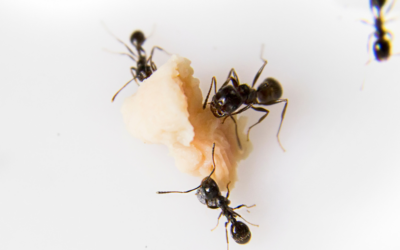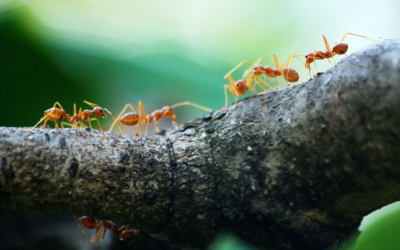Living in Central Texas offers many outdoor adventures. However, it also means dealing with a formidable enemy: the fire ant. These invasive pests have made their mark in the region, causing painful stings and creating unsightly mounds in our yards.
This guide covers all aspects of fire ants. We will discuss their characteristics, behaviors, and management strategies. So, let’s dive in and equip ourselves with the knowledge to combat these troublesome pests.
Meet the Fire Ants
Fire ants, scientifically known as Solenopsis invicta, are aggressive ants notorious for their painful stings. Originating from South America, they have established thriving populations in Central Texas. Let’s take a closer look at their characteristics:
Characteristics of Fire Ants
- Size and Appearance: they range in size from 1/8 to 1/4 inch in length. They have a reddish-brown to dark brown coloration, with darker bodies and lighter heads. The workers have a distinctive “waist” or segmented abdomen.
- Aggressive Nature: Fire ants are highly aggressive and will aggressively defend their nests and territory. When disturbed, they swarm and deliver painful stings that cause a burning sensation.
Habits and Behaviors of Fire Ants
- Nesting: Fire ants construct large, earthen mounds as their nests. These mounds can vary in size and may contain multiple entrances. The nests are often found in open areas such as lawns, gardens, and pastures.
- Fire ants are omnivorous. They feed on a range of food sources, such as other insects, seeds, fruits, and even small vertebrates. They are particularly attracted to sweet substances and proteins.
- Colony Structure: Fire ant colonies consist of three main groups: queens, male ants, and worker ants. The queen is responsible for reproduction, while male ants have the sole purpose of mating. The workers are responsible for foraging, nest maintenance, and defense.
Dealing with Fire Ant Infestations
Managing infestations requires a proactive approach to protect yourself and your property. Here are some effective strategies for Central Texas residents:
Prevention and Control Methods
- Regular Yard Maintenance: Keep your lawn well-maintained by mowing regularly and removing debris. Fire ants prefer undisturbed areas, so keeping your yard clean and tidy helps discourage their nesting.
- Reduce Food Sources: Minimize attractive food sources by properly disposing of food scraps, sealing garbage cans, and cleaning up spills promptly. This helps eliminate potential food sources for them.
- Use Baits and Insecticides: Consider using ant baits and insecticides specifically formulated for fire ants. Follow the instructions carefully and apply them strategically to target the colonies. It is advisable to consult with a professional pest control service for effective and safe application.
- Personal Protection: When working outdoors, wear protective clothing, including long sleeves, pants, and closed-toe shoes. This reduces the risk of fire ant stings.
Treating Fire Ant Stings
If you or someone else is stung by a fire ant, prompt action can help alleviate the discomfort:
- Move to a Safe Area: Quickly move away from the mound to avoid further stings.
- Wash the Affected Area: Clean the sting site with soap and water to reduce the risk of infection.
- Apply Cold Compress: Use a cold compress or ice pack wrapped in a cloth to help reduce swelling and alleviate pain.
- Over-the-Counter Remedies: Over-the-counter creams, ointments, or antihistamines can provide temporary relief from itching and irritation.
855Bugs Will Protect You From The Infamous Fire Ant
As Central Texas residents, it’s essential to stay informed about the presence of fire ants and how to manage them effectively. Understand their characteristics, habits, and control methods. This will help minimize their impact on your property. Additionally, it will protect you from painful stings.
Remember to prioritize safety and schedule a free inspection with 855Bugs for comprehensive fire ant management. Stay vigilant and enjoy your Central Texas surroundings without the menace.




